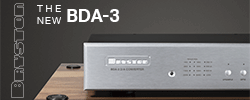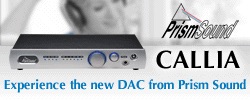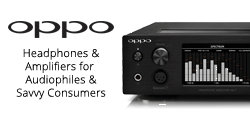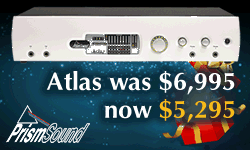 |
| “ Home Studio or Live: Compact Format Digital Mixer” |
Brevis...
Price: $1,599
Likes: price, sound versatility
Dislikes: needs more mic pres
by James Edlund
I’ve never been a big fan of digital mixing consoles. Given the choice, I’ll pick analog every time. I like every possible tweak right at my fingertips and hate scrolling through banks, layers and menus.
But for what I do these days, digital only makes sense. So, the goal has been to find the most versatile and best-sounding compact digital console out there — one with a blade, a saw, scissors, magnifying glass, tweezers — and that little plastic toothpick. We’re talking the sonic equivalent of a Swiss Army Knife.
My idealized Swiss Army digital desk has to travel easily for on-location voice over and video production. Second, it needs to set up quickly and easily for solo home studio recording, band rehearsals and live performances.
Over the years, I’ve used everything from the Mackie to Midas for the above applications, but none has left me completely satisfied. So, when I learned that PreSonus was expanding its StudioLive family to include a compact digital desk, I wanted a closer look.
Features
The PreSonus SL 16.0.2, priced at $1,399 on the street, is loaded with many of the same features of its big brothers, the 16.4.2 and 24.4.2, just with less inputs/channels. The 16.0.2 has 16-line inputs, 12 Class-A mic pres, four aux mix buses, a dedicated talkback section — even MIDI I/O. To that, add a 16x16 FireWire recording and playback engine and two onboard 32-bit effects processors, jammed with high-quality reverbs, delays and more. Every channel has compression/limiting, gates, and 3-band semi-parametric EQ and there’s 31-band graphic equalization on the mains.
The work surface mimics the classic analog console work surface we’ve been using for years and each channel’s gain structure can be adjusted via the channel strip. There’s no endless scrolling through pages.
It also comes complete with loads of software in a neat little box labeled as StudioLive Software Library. The first of the included software components is Studio One Artist, an easy-to-use, intuitive and flexible DAW. Another program called Capture allows easy live recording and Virtual StudioLive gives you control of the mixer via a laptop. And, for the truly tech savvy, StudioLive Remote for iPad and QMix for iPhone/iPod Touch an app from the Apple store.
StudioLive Remote offers virtually complete control of the mixer. You can change routing, link channels, edit dynamics processing and effects, flip polarity, use Smaart, change scenes, etc., from the iPad. You also can view the compressor and EQ curves and can adjust them directly in the graphic. QMix controls just the aux mixes.
Virtual StudioLive also is an editor/librarian and integrates the Smaart Spectrograph and RTA, the former is offered in very few boards at any price.
I’ll say it again. iPad. Now imagine walking around the studio — or better yet, a performance venue — and affecting real-time EQ changes on the compact mixer — all without the substantial investment that similar technologies cost in larger systems. StudioLive Remote also gives you control over the auxes, so theoretically every performer in a band could have an iPhone/iPad and control his/her own mix. This could definitely come in handy in the studio, allowing musicians to tailor their headphone mixes. So much of “Can I get a little more of me, please?”
Rugged and Easy To Use
Let’s face it, many cheap compact mixers are practically disposable. Not the SL 16.0.2. Right out of the box, you get an idea of how serious this little guy is. The SL 16.0.2 is heavy — as in over 15 pounds. And there is not a lot of plastic. The console chassis is metal, making it a practical choice for moving in and out of clubs, rehearsal spaces and wherever I set up my video/audio gear. Kudos to PreSonus for a rugged design that withstands real-world conditions — something you’ll want to take care of but don’t have to treat like someone with Brittle Bone disease.
Plenty of connections for home recording studios
The work surface mimics the classic analog console work surface we’ve been using for years; each channel’s gain structure can be adjusted via the channel strip. There’s no endless scrolling through pages. Simply select your channel, and follow the signal path from the fader to the trim knob at the top — through myriad signal processing options in The Fat Channel. Even effects can be assigned and adjusted by channel via Fat Channel, an extension of each channel strip. Yes, it feels like an analog console.
The Fat Channel
Fat Channel is the heart of the SL 16.0.2. Basically, it gives you control of dynamics, routing, and panning at the touch of a Select button for every input and output. Twelve multi-purpose knobs and meters control nearly every adjustment you’ll need to make, including choosing between high-pass filters, expanders, compressors, limiters, 3-band semi-parametric EQs and phase inverters. You can also create sends and effects mixes for all four analog aux sends and both internal effects buses. Via the Fat Channel is also where you meter the inputs, aux and main outputs, and gain reduction for all 16 channels. Plus, you can copy, save, and load mix scenes and recall your fader position for stored mixes.
The Audition
I used a simple set-up for testing solo instrumentation and voice over. To find out how the mixer really sounded used three industry standard mics: I connected a Shure SM57; a Shure SM58; and an Electro-Voice RE20. All were connected to the SL 16.0.2 with premium BLUE Kiwi microphone cables, monitored through AKG-K240 headphones and Mackie HR824 monitors.
I recorded my voice, a 1969 Martin D-18, a Gibson dobro and a Rodriguez Tele-style plugged into both a Mojotone ’57 Twin kit amplifier and a 1974 Vibrolux Reverb — via a Monster guitar cable; no outboard effects, EQ set to flat. To test vocals, I recited parts of a web video script I had been working on and my own voice singing with acoustic guitar.
One reason the 16.0.2 sounds so good is its high-quality preamp section. PreSonus’ proprietary XMAX preamps deliver tons of headroom via an 18V high-voltage power rail design, discrete components (not op-amps) and class-A circuitry (rather than AB).
Right out the gate I was very pleased—no latency. Recording both voice and guitar, tracking was seamless. Sans effects and with flat EQ, what I heard through my cans was spot-on — no overt coloration. Everything sounded just as it should, musical and full of sonic character without the noise, distortion and harshness present in a lot of the cheap compact-format digital desks.
One reason the 16.0.2 sounds so good is its high-quality preamp section. PreSonus’ proprietary XMAX preamps deliver tons of headroom via an 18V high-voltage power rail design, discrete components (not op-amps) and class-A circuitry (rather than AB). To get this quality of preamps at this price point—and in a compact format console—is something that’s definitely been missing from the market.
 |
| Virtual StudioLive enables computer control of mixer |
Plus, you get great A/D-D/A conversion with a factory spec’d 118 dB dynamic range, adding significantly to the desk’s clean sound. PreSonus also says one of the core technologies in the desk is JetPLL Synchronization, which “incorporates noise shaping to virtually remove all audio-band jitter, ensuring optimal converter performance when networking two or more digital-audio devices.” The result, they say, is better stereo separation and clearer, more transparent audio. That’s definitely good news for those of you who will be integrating the unit into existing studios or adding inputs via other digital devices.
Rehearsal Recording
The guys in my band were immediately apprehensive of recording with the new mixer, saying they didn’t want to make our limited rehearsal time “too complicated.”
In the old days we hung PZMs and recorded to DAT. Eventually, we put together a small ProTools rig, but soon the rehearsals lost steam as we spent more time mixing, less playing. The rig soon gathered dust and was later jettisoned. Then we started experimenting with handheld digital recorders like the Zoom H4N. The purpose of these recordings was simply to capture moments of spontaneity or seeds of a new song. So, like I said, the guys were a bit wary of the new machine.
But once we got everything mic’d and the live mix the way the band wanted (with four monitor mixes, mind you) it was as simple as launching the PreSonus Capture software, creating a New Session and hitting the record button. Even our stoned bass player learned how to operate the console.
But once we got everything mic’d and the live mix the way the band wanted (with 4 monitor mixes, mind you), it was as simple as launching the PreSonus Capture software, creating a New Session and hitting the record button. Even our stoned bass player learned how to operate the console and software, including inserting markers to easily export new songs or parts of songs as separate files in Capture.
You’ve gotta love that the software automatically maps up to 16 inputs — almost automatically. Then, if you want, you can mix the Capture files in Studio One Artist, adding effects, EQ, etc., — in the box or back on the console via FireWire. It’s brilliant. The guys are sold.
Live recording/mixong
Although I have yet to use the 16.0.2 in a live FOH/Monitors and recording situation beyond band rehearsals, Jeff Taylor of The Farm A/V, in Minneapolis, says the desk is a perfect mixer for various live sound duties like small-to-medium-sized clubs, houses of worship, theater, corporate A/V and live performance studios in broadcast facilities. Its remote access also makes the 16.0.2. especially attractive to commercial sound designers and installers.
The nit picks
This version of the StudioLive is limited to 12 mic preamps inputs, which could be am issue for some recording applications. Also, the faders are not motorized, and there is no auto channel selection when a fader is moved. Not a huge deal, but worth pointing out. Otherwise, the desk is just amazing.
The Verdict
At the end of the day, the PreSonus 16.0.2 does exactly what it purports and a whole lot more. It is versatile for almost any application including the ever important home recording studio. Throw in its amazing price, ease of use and high-end sound quality and compatibility with wireless ancillaries iPad, iPhone, iPod Touch I challenge you to find a similar feature set in any other compact-format digital desk on the market — for anywhere near this price.
Formerly of Electro-Voice, James Edlund is a certified audio junkie, musician and home studio engineer. He also is an editor for North American Fisherman magazine.
©Articles on this site are the copyright of the Everything Audio Network. Any unauthorized use, via print or Internet, without written permission is prohibited.















































































